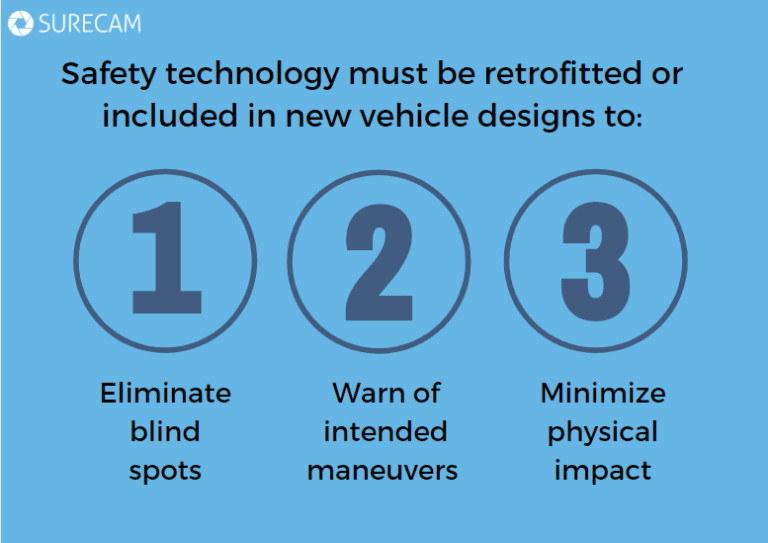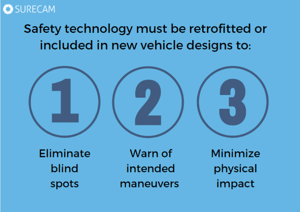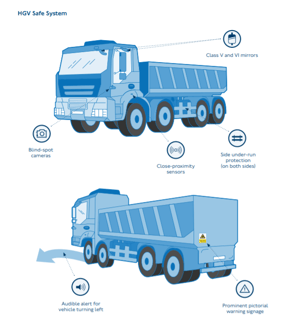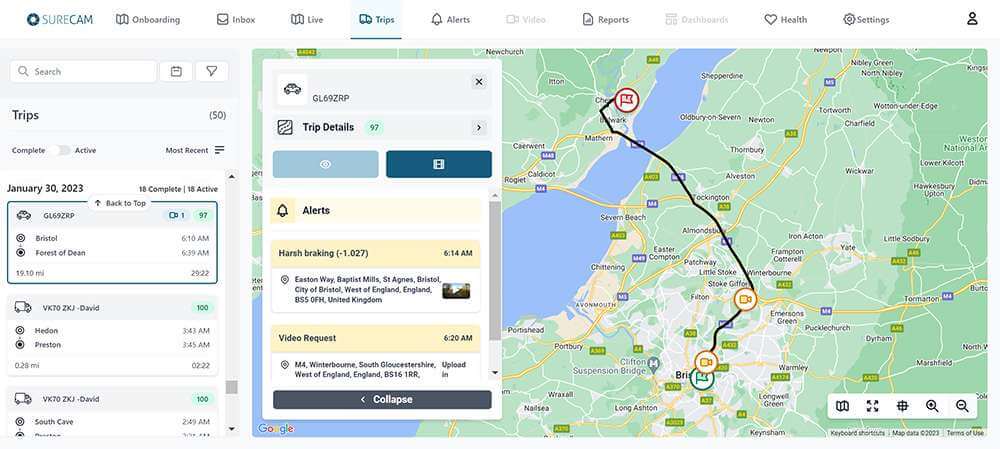Are Your HVG’s Ready For Safe System Requirements?

TfL Direct Vision Standard: Safe System Requirements Are Your HGVs Ready?
Originally on 26 October 2020, now postponed until February 2021 due to the Coronavirus, TfL's Direct Vision Standard (DVS) will go into effect. It will require all HGV operators to apply for an HGV Safety Permit in order to drive in London.
UPDATE: The enforcement of TfL’s Direct Vision Standard (DVS) has been delayed until February 2021 to allow businesses more time to prepare for DVS while navigating the Coronavirus (COVID-19) public health crisis. Read the TfL’s full update on the postponement of DVS.
DVS will rate HGVs depending on the level of a driver's direct vision from a cab. To apply for an HGV Safety Permit, your vehicle has to have a DVS rating of at least one-star and above. Zero-rated vehicles will be banned from the start of enforcement originally scheduled for October 2020, now updated to February 2021, and three-stars will be required to drive on London's streets by 2024.
Retrofitting Your HGV with a Safe System
If your vehicle is zero-rated for Direct Vision, you will need to retrofit your lorry with a Safe System before you can apply for an HGV permit. TfL does not mandate any specific make or brand of equipment or technology as part of the safe system.
The Direct Vision Standard Safe System Permit requirements:

The following vehicle requirements are mandatory by TfL for the Safe System:
To improve vision and eliminate blind spots:
- Mirrors (Front/Nearside)
- Camera Monitoring System
- Nearside Sensor System
To warn others of intended manoeuvres:
- Audible warning alarm
- Stickers & Markings
To minimise physical impact with hazards:
- Sideguards

Class V and Class VI mirrors:
Mirrors should be fitted to the nearside and front of the HGV vehicle:
- Class V mirrors also known as kerb mirrors, go over the near side door so the driver can view the nearside of the truck.
- Class VI mirrors also known as front view mirrors go over the front screen and are used to give drivers visibility across the front of the truck.
Camera monitoring systems:
Camera monitoring systems should aim to completely eliminate or minimise the remaining vehicle blind spot at the nearside.
In–cab monitors are required to be positioned close to a window edge or existing mirror location without obscuring the view through the window. Monitors should only display camera views for low–speed manoeuvring such as turning left and reversing and may turn off at speeds above 20mph.
Class V and Class VI mirrors:
Mirrors should be fitted to the nearside and front of the HGV vehicle:
- Class V mirrors also known as kerb mirrors, go over the near side door so the driver can view the nearside of the truck.
- Class VI mirrors also known as front view mirrors go over the front screen and are used to give drivers visibility across the front of the truck.
A nearside sensor system that alerts the driver to the presence of a vulnerable road user.
TfL recommends that sensors fitted to rigid vehicles should ensure coverage 6m down the nearside or 1m from the rear of the vehicle. In the case of tractor units, sensors should be suitably positioned to provide sufficient coverage but preventing activation solely on the articulation of the trailer.
The sensor system may switch off at speeds above 20mph so as not to cause driver overload or distraction.
Warning of intended manoeuvre using alarms and signage
To comply with DVS, it is mandatory that vehicles over 12 tonnes are fitted with an audible vehicle manoeuvring warning. It is recommended that the volume of the audible warning, measured at 1m from the sounder, should be between 65 and 88 decibels. A combination of spoken word and white noise should be considered.
External pictorial stickers and instructional signage should also be used to warn vulnerable road users of hazards around the vehicle.
Sideguards
Under-run sideguards need to be fitted to both sides of the vehicle to protect cyclists from being dragged under the wheels in the event of a collision.
FORS and Direct Visons Standard (DVS)
If you already have a FORS Silver or Gold accreditation, your vehicle will be DVS compliant.
How to apply for an HGV safety permit
To apply for a permit online, visit www.tfl.gov.uk/direct-vision-permit

You will need to enter the following information:
- Vehicle details (or multiple vehicles via a spreadsheet template) and check ratings
- Vehicle operator details
- Contact details
If your HGV is rated zero-star:
- Upload two photos of Safe System equipment
- Submit your application
- Your application will be reviewed and if accepted, a safety permit will be issued. If rejected, you will be given reasons why and you are able to re-apply.
If your HGV is rated as one to five stars, an electronic permit will be granted without the need to provide additional information.
Get in touch to find out how SureCam can help you get your vehicle DVS ready with turnkey DVS kits! (CTA will be updated with the BOTU article once created)

Book a demo today!
SureCam offers GPS vehicle tracking, live video, and real-time alerts for efficient fleet management. Get a Demo


